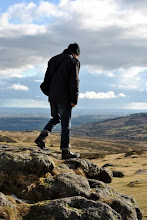 What is it about Birches? Why do I keep specifying them in my designs and photographing them in 'the wild' at parks and gardens? Whether it's the sheer brilliant white of the Himalayan Birch, (Betula utilis, especially variant Jaquemontii) outside the Tate Modern or a forest of native Betula pendula in the Surrey downs, they look stunning and yet completely natural in so many different settings. The Maclaren racing headquarters outside Woking has the most amazing forest of Jaquemontiis set out in a rigid grid pattern by their main entrance. It is so eye catching I have nearly crashed my car on a number of occasions while passing, bewitched by the strobing white lines of the trunks.
What is it about Birches? Why do I keep specifying them in my designs and photographing them in 'the wild' at parks and gardens? Whether it's the sheer brilliant white of the Himalayan Birch, (Betula utilis, especially variant Jaquemontii) outside the Tate Modern or a forest of native Betula pendula in the Surrey downs, they look stunning and yet completely natural in so many different settings. The Maclaren racing headquarters outside Woking has the most amazing forest of Jaquemontiis set out in a rigid grid pattern by their main entrance. It is so eye catching I have nearly crashed my car on a number of occasions while passing, bewitched by the strobing white lines of the trunks. I am often drawn, when in a melancholy mood, to Chobham Common to walk in this slightly 'other worldly' landscape of rare Surrey lowland heath. Here native Birches can be seen at their pioneering best (or worst depending on your outlook). The heathland is under constant threat from gorse, pine and Betula pendula. This fast growing, pioneering nature of the Birch means they are relatively short-lived as a species and so are not what I would describe as 'legacy trees'. In fact, you could easily plant a birch and watch it mature and die in your own lifetime. When specifing trees I like to think that once planted they are going to be there for some time, long after the owners and myself are no longer around to appreciate them. Obviously I have no power over what people or the environment may decide for a particular specimen in years to come, but with short lived trees we have no choice in the matter. Still, I like birches too much to let this become an issue. Besides, a 40 year life span for a feature in a garden should be considered most generous.
I am often drawn, when in a melancholy mood, to Chobham Common to walk in this slightly 'other worldly' landscape of rare Surrey lowland heath. Here native Birches can be seen at their pioneering best (or worst depending on your outlook). The heathland is under constant threat from gorse, pine and Betula pendula. This fast growing, pioneering nature of the Birch means they are relatively short-lived as a species and so are not what I would describe as 'legacy trees'. In fact, you could easily plant a birch and watch it mature and die in your own lifetime. When specifing trees I like to think that once planted they are going to be there for some time, long after the owners and myself are no longer around to appreciate them. Obviously I have no power over what people or the environment may decide for a particular specimen in years to come, but with short lived trees we have no choice in the matter. Still, I like birches too much to let this become an issue. Besides, a 40 year life span for a feature in a garden should be considered most generous. It seems not many people are interested in thinking ten years down the line, let alone 50 or a 100. This is perhaps understandable in a mobile society where we don't generally hand properties down through the generations like a 'Capabilty Brown' estate. In public spaces however, we should most definitely be thinking long term and planting majestic trees for future generations. Unfortunately many local authorities are too scared of roots disrupting pavements and foundations so all too often they choose to plant shorter lived, relatively small trees. Where will the majestic London plane and chestnut trees in our towns and cities be in the future? Private gardens mostly. We should plant great trees for the future in our gardens as much as we plant beautiful groves of birches, remembering that these are but fleeting ghosts that take advantage of open space till the giants take over.
It seems not many people are interested in thinking ten years down the line, let alone 50 or a 100. This is perhaps understandable in a mobile society where we don't generally hand properties down through the generations like a 'Capabilty Brown' estate. In public spaces however, we should most definitely be thinking long term and planting majestic trees for future generations. Unfortunately many local authorities are too scared of roots disrupting pavements and foundations so all too often they choose to plant shorter lived, relatively small trees. Where will the majestic London plane and chestnut trees in our towns and cities be in the future? Private gardens mostly. We should plant great trees for the future in our gardens as much as we plant beautiful groves of birches, remembering that these are but fleeting ghosts that take advantage of open space till the giants take over.I still haven't fathomed what it is about birches. Probably something to do with the whiteness, but I don't want to go all Herman Melville on the subject so I'll leave it there, for now...

I see what you mean about The Whiteness of birches and suspect lots of people sense their ethereal elegance. Somehow, white birches seem aloof, otherworldly, elusive...
ReplyDeleteLike poplars, they aren't especially long-lived but neither are many beautiful things. I love them nevertheless.